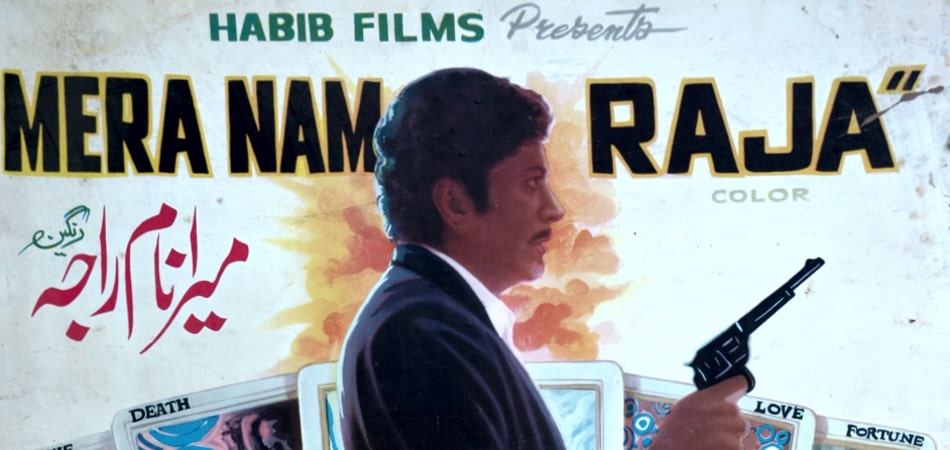An intriguing, animated title sequence to some plagiarized R.D. Burman title music (Yaadon ki Baraat) promises great things. Then there is a particularly mysterious shoot-out after which a shadowy figure takes a pistol and plants it in a secret compartment carved into the witness box in a courtroom. The next day during a court trial, a nefarious diamond thief makes his getaway using the planted pistol to great effect. We find that Habib (Raja) is the diamond smuggler, but he isn’t a diamond smuggler but an undercover top brass agent using a brilliant smokescreen to access the criminal underworld.
One day wealthy socialite Farzana’s Mercedes breaks down, and she is attacked by some goons, only to be rescued by Raja in the nick of time. Soon enough, love blossoms between the rescuer and the saved, with Raja enchanting Naghma in no time. Then we follow the exploits of happy-go-lucky Raja, who appears to be hot on the trail of a gang of villains whose boss is Talish, father of the luscious Farzana (Naghma). Unfortunately, what should have been a wild and wacky pseudo-Bond caper turns out to be a chaotic mess from the very outset and never recovers from the chaos of the film’s dreadful script.
It transpires that Raja’s accidental sidekick’s mute sister was gang raped (as one is shown in a very gratuitous flashback), and he is out to take revenge on those who perpetrated the horror. Meanwhile, Raja appears to have his secret agenda. Munawar Zareef plays Raja’s sidekick, and together they provide much highly tedious slapstick-style comedy to proceedings.
There is much light comedy (too much), inane frolicking, and some very forgettable songs, including a huge “piya tu ab to aa ja” rip-off danced to by the seductive Madame Sangeeta. When the farcical events on the screen appear meandering to nowhere, a sudden interlude provides the audience with some much-needed respite. Suddenly, the rather genteel events on screen are interrupted by a stunning snake dance by Ms Voluptuous Thunder Thighs Mussy Shaheen. She performs a raunchy number where the camera tries to catch her panties from all sorts of unlikely angles—mesmerizing stuff, these “chaddee shots”. Then the audience is treated to a series of almost surreal fight sequences with typically insane stunts involving men leaping up to 70 feet at a time! Bizarre, totally insane, wild stuff—but alas, even the sleazy dance, Mussy’s thunderous thighs, and the demented fight sequences can’t rescue the film from its inherent weakness, a lousy script and a non-existent plot.
Mera Naam Raja is, for all intents and purposes, a vehicle for the thespian talents of Habib (It’s a “Habib production”, after all). Though his diehard fans may delight in his antics, most filmgoers were not amused as the film died an ignominious death at the Box Office when released in 1978. The fact that the film was shot in black and white when most productions had adopted colour was another reason for its dismal failure. However, as with most awful movies, this one has a wonderful poster, which certainly would have fooled me into parting with my money—the poster is far more attractive than the film itself.
Naghma, who happened to be the real Mrs Habib when the film was made, does an adequate job as Farzana though she doesn’t have much scope, while the legendary Madame Sangeeta makes a brief but disjointed appearance as well. However, despite its many dubious qualities, sadly, the film didn’t turn out to be the mega cult classic it should have been.
